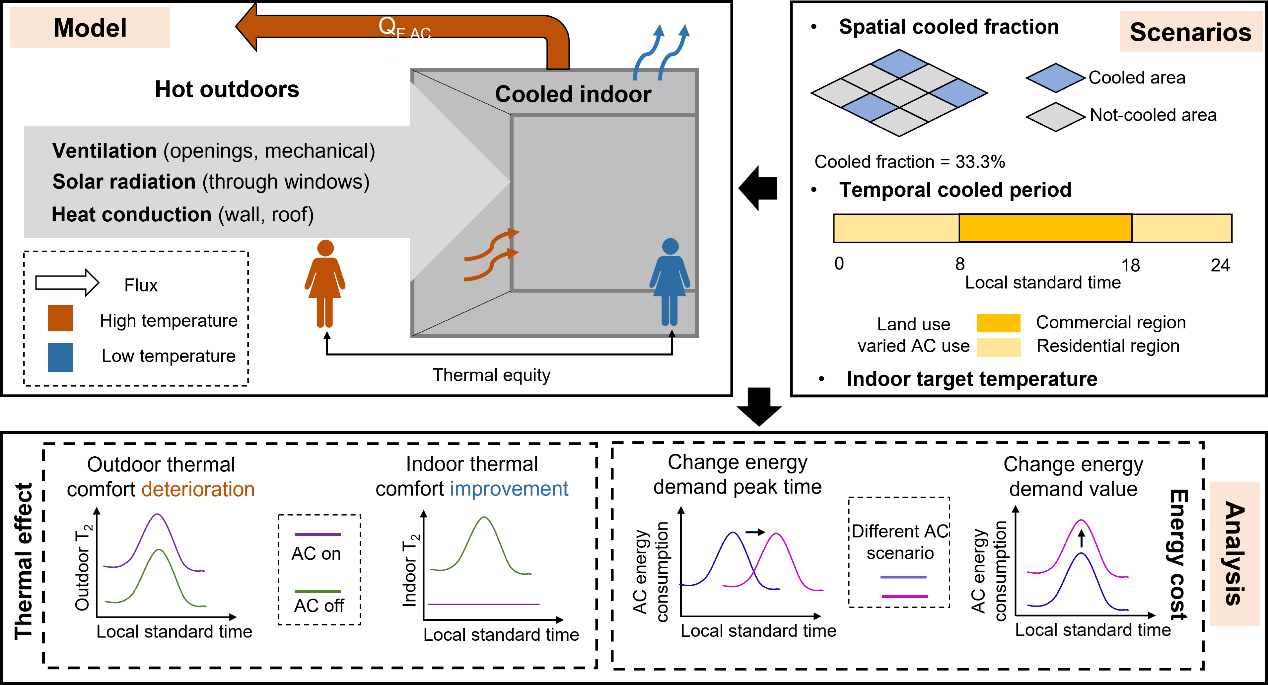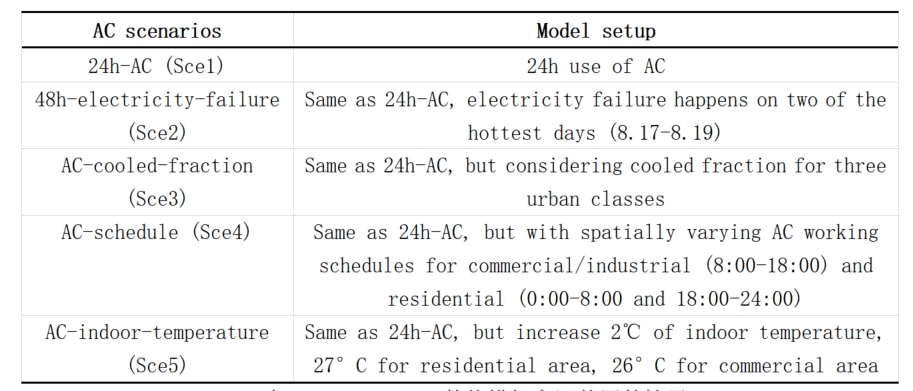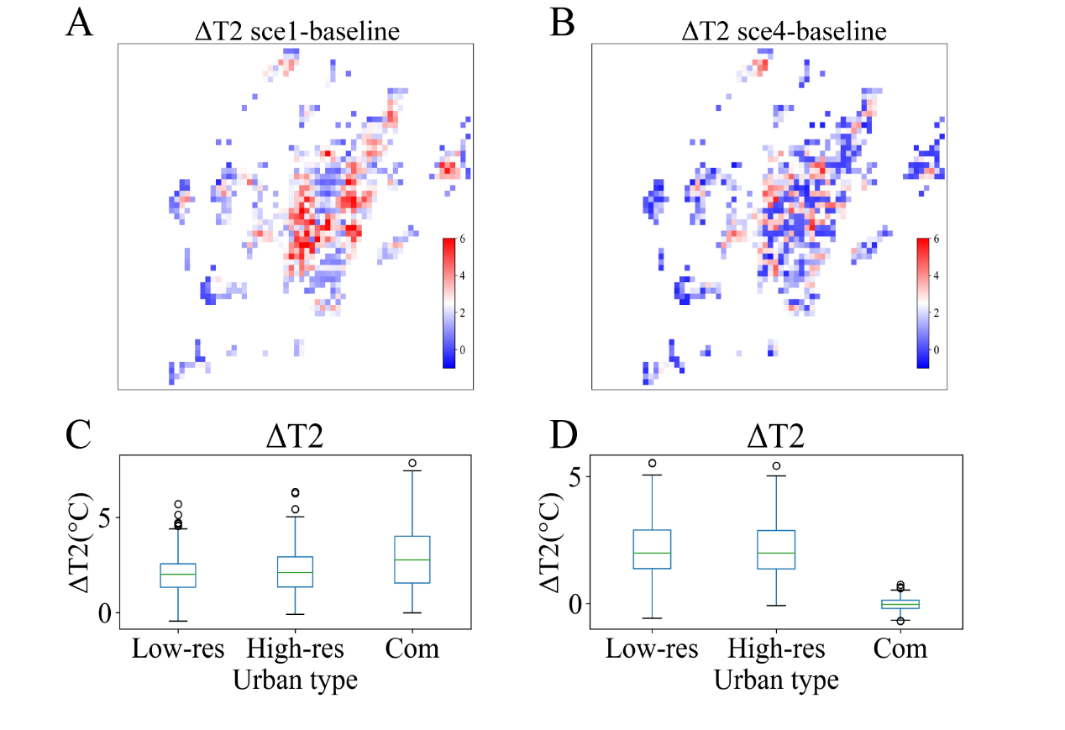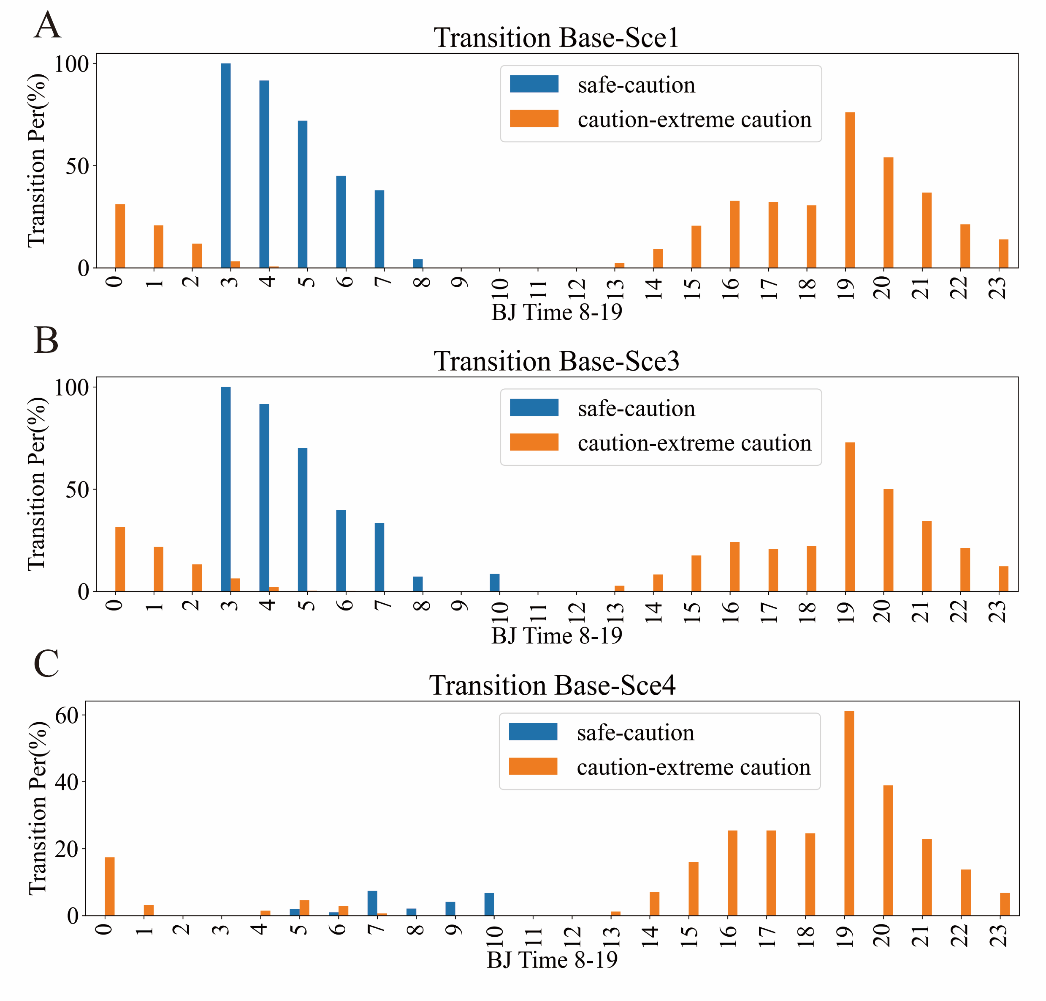With increasing urban heat events under the impact of climate change, urbanization and other factors, air conditioning (AC) has become key equipment to maintain indoor thermal comfort. Yet the usage of AC can also exacerbate outdoor heat stress and burden the electricity system during the peak period. Due to the present lack of quantitative research on the indoor and outdoor thermal comfort changes caused by the widespread AC usage and the ensuing disparity, it is impossible to provide effective suggestions to improve the equity of indoor and outdoor thermal comfort.
To address the above problem, Professor Xu Bing’s Research Group of the Department of Earth System Science (DESS), Tsinghua University integrated the Weather Research and Forecasting model (WRF) with the building energy model (WRF_BEP + BEM), and established a coupled modeling approach to simulate indoor and outdoor thermal comfort and AC energy consumption (Figure 1) under 5 AC usage scenarios (Table 1) in Chongqing during a heatwave period spanning from August 10th to August 30th, 2022.

Figure 1 Research diagram

Table 1. Design of WRF-BEP+BEM Numerical Experiments
AC systems can substantially reduce indoor temperatures by up to 18 °C; however, the extensive use of AC systems can substantially cause outdoor warming (2–2.5 °C), and such significant warming occurs at nighttime (19:00-7:00 next day), particularly for high-density neighborhoods and commercial areas (Figure 2).

Figure 2 T2 difference among different scenarios at 19:00 of 19th August. Spatial T2 difference between Sce1 (A), Sce4 (B), and baseline. Zonal statistics of T2 difference on urban land use (C-D).
With reference to the heat index (HI) related to human health, the research discovers significant improvement in outdoor thermal comfort with the reduction of the AC-cooled faction (Sce3). The regulation of nighttime AC usage holds the potential to significantly enhance the overall outdoor heat comfort levels within the city (Figure 3). A 2 ℃ increase in indoor temperature from the baseline scenario (Sce5) can reduce outdoor temperature by 1℃ at most, thus enhancing the thermal comfort equity of indoor and outdoor populations.

Figure 3. HI level transition in 24 h of 19th August between baseline and (A) Sce1, (B) Sce3, and (C) Sce4.
In terms of urban energy consumption, reducing the spatial cooled fraction or regulating AC usage time on different types of urban land can both effectively reduce energy consumption. Despite partial alleviation of peak electricity consumption by regulating AC working periods, the adequacy and continuity of power supply are still challenged. In addition, due to the positive feedback of AC and urban climate, outdoor warming resulting from AC cooling on a large scale can further increase AC energy consumption.
The study underscores the urgency of reassessing energy resilience and advocates for addressing the thermal equity between indoor and outdoor environments, contributing to the development of a sustainable and just urban climate strategy against the backdrops of climate change.
The related results have been recently published in Environmental Science & Technology as a paper titled “Moderating AC Usage Can Reduce Thermal Disparity between Indoor and Outdoor Environments”.
Wei Hong, a doctoral candidate in the DESS, Tsinghua University, is the first author of the paper, and Professor Bing Xu of the DESS and Assistant Professor Chen Bin of the University of Hong Kong are the corresponding authors. Other co-authors of the paper include Assistant Professor Huang Kangning of New York University Shanghai, Professor Gao Meng from Hong Kong Baptist University, Dr. Fan Bin and Dr. Zhang Tao of the DESS, and Dr. Tu Ying, a graduate of the DESS. This study was supported by the Open Research Program of the International Research Center of Big Data for Sustainable Development Goals (CBAS2022ORP02), the National Key Research and Development Program of China (2022YFB3903703 and 2022YFE0209300), the National Natural Science Foundation of China (grant number 42090015, 72091514), the University of Hong Kong Seed Fund for Strategic Interdisciplinary Research Scheme, and the University Grants Committee (UGC) Collaborative Research Fund (CRF) Young Collaborative Research Grant (C2002-22Y).
Full-text link:
https://pubs.acs.org/doi/full/10.1021/acs.est.4c00424
Written by Wei Hong